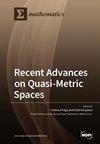Optimal Epidemic Control with Nonmedical and Medical Interventions
IF 2.3
3区 数学
Q1 MATHEMATICS
引用次数: 0
Abstract
In this study, we investigate different epidemic control scenarios through theoretical analysis and numerical simulations. To account for two important types of control at the early ascending stage of an outbreak, nonmedical interventions, and medical treatments, a compartmental model is considered with the first control aimed at lowering the disease transmission rate through behavioral changes and the second control set to lower the period of infectiousness by means of antiviral medications and other forms of medical care. In all experiments, the implementation of control strategies reduces the daily cumulative number of cases and successfully “flattens the curve”. The reduction in the cumulative cases is achieved by eliminating or delaying new cases. This delay is incredibly valuable, as it provides public health organizations with more time to advance antiviral treatments and devise alternative preventive measures. The main theoretical result of the paper, Theorem 1, concludes that the two optimal control functions may be increasing initially. However, beyond a certain point, both controls decline (possibly causing the number of newly infected people to grow). The numerical simulations conducted by the authors confirm theoretical findings, which indicates that, ideally, around the time that early interventions become less effective, the control strategy must be upgraded through the addition of new and improved tools, such as vaccines, therapeutics, testing, air ventilation, and others, in order to successfully battle the virus going forward.利用非医疗和医疗干预措施优化流行病控制
在本研究中,我们通过理论分析和数值模拟研究了不同的流行病控制方案。为了考虑疫情初期上升阶段的两种重要控制方式--非医疗干预和医疗治疗,我们考虑了一个分区模型,第一种控制方式旨在通过行为改变降低疾病传播率,第二种控制方式设定为通过抗病毒药物和其他形式的医疗护理降低传染期。在所有实验中,控制策略的实施都降低了每日累计病例数,成功地 "拉平了曲线"。累计病例数的减少是通过消除或推迟新增病例来实现的。这种延迟具有惊人的价值,因为它为公共卫生组织提供了更多的时间来推进抗病毒治疗和设计替代预防措施。本文的主要理论结果定理 1 得出结论,两个最优控制函数最初可能是递增的。然而,超过一定程度后,两个控制函数都会下降(可能导致新感染人数增加)。作者进行的数值模拟证实了这一理论结果,表明在理想情况下,当早期干预措施变得不那么有效时,必须通过增加新的和改进的工具(如疫苗、疗法、检测、空气流通等)来升级控制策略,以便在未来成功地与病毒作斗争。
本文章由计算机程序翻译,如有差异,请以英文原文为准。
求助全文
约1分钟内获得全文
求助全文
来源期刊

Mathematics
Mathematics-General Mathematics
CiteScore
4.00
自引率
16.70%
发文量
4032
审稿时长
21.9 days
期刊介绍:
Mathematics (ISSN 2227-7390) is an international, open access journal which provides an advanced forum for studies related to mathematical sciences. It devotes exclusively to the publication of high-quality reviews, regular research papers and short communications in all areas of pure and applied mathematics. Mathematics also publishes timely and thorough survey articles on current trends, new theoretical techniques, novel ideas and new mathematical tools in different branches of mathematics.
 求助内容:
求助内容: 应助结果提醒方式:
应助结果提醒方式:


